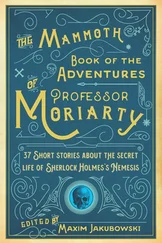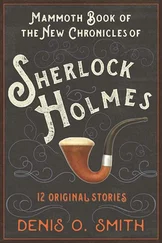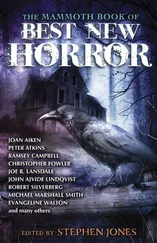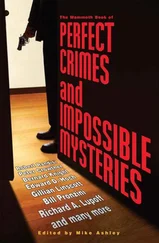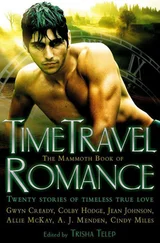Stephen Jones - The Mammoth Book of Terror
Здесь есть возможность читать онлайн «Stephen Jones - The Mammoth Book of Terror» весь текст электронной книги совершенно бесплатно (целиком полную версию без сокращений). В некоторых случаях можно слушать аудио, скачать через торрент в формате fb2 и присутствует краткое содержание. Год выпуска: 0101, ISBN: 0101, Издательство: Constable & Robinson, Жанр: Старинная литература, на английском языке. Описание произведения, (предисловие) а так же отзывы посетителей доступны на портале библиотеки ЛибКат.
- Название:The Mammoth Book of Terror
- Автор:
- Издательство:Constable & Robinson
- Жанр:
- Год:0101
- ISBN:1841199494
- Рейтинг книги:5 / 5. Голосов: 1
-
Избранное:Добавить в избранное
- Отзывы:
-
Ваша оценка:
- 100
- 1
- 2
- 3
- 4
- 5
The Mammoth Book of Terror: краткое содержание, описание и аннотация
Предлагаем к чтению аннотацию, описание, краткое содержание или предисловие (зависит от того, что написал сам автор книги «The Mammoth Book of Terror»). Если вы не нашли необходимую информацию о книге — напишите в комментариях, мы постараемся отыскать её.
The Mammoth Book of Terror — читать онлайн бесплатно полную книгу (весь текст) целиком
Ниже представлен текст книги, разбитый по страницам. Система сохранения места последней прочитанной страницы, позволяет с удобством читать онлайн бесплатно книгу «The Mammoth Book of Terror», без необходимости каждый раз заново искать на чём Вы остановились. Поставьте закладку, и сможете в любой момент перейти на страницу, на которой закончили чтение.
Интервал:
Закладка:
“The original painting for that cover, by Ed Emshwiller, now resides in the Eisenstein art collection. But to say more about either of those sources would be to say too much, and identifying them must be left as an exercise for the reader.”
THE HOUSE SEEMED LARGE and empty now that her parents were dead. And yet it was also so soothingly quiet that Lydia would sometimes just stand in the high-ceilinged dining room and relish the silence. No shrill voice came floating from the upper story, no gravelly, grating one from the oak-paneled study, no orders, demands, advice, admonishments. The electricity was gone from the air, leaving nothing but solitude.
She had dreamed of such peace, dreamed as the years and her youth ebbed away, eroded by a struggle she was too weak to win. Dutiful and self-sacrificing, people had called her – nurse, maid, cook, buffer between her parents and the outside world. But behind her back, she knew, they had clucked their tongues over the poor, dried-up spinster. What did they know of the guilts and fears that her parents had instilled in her, of the elaborate net of obligation they had spun about her, till she was bound to them with ties that only death could sever. And death had come, at last, like a knight on his pale charger, and borne away two coffins that set her free. Still, people clucked their tongues, because Lydia lived much as before, alone in her parents’ house, alone in her heart. If anything, she was quieter than ever.
Yet some things had changed for her. She painted a great deal more these days, uninterrupted. She had moved her studio from the basement to the big bedroom upstairs, where the light splashed in from windows on three sides. On fine days, she would open those windows and let the sea air wash away the smell of paint. In the evenings she walked by the shore, sharing it with tourists and young lovers, and there were no responsibilities to call her home at any particular time. Some nights, she would be there long after the noises of traffic had faded to nothing, till only the bell of a distant buoy remained for company. She hardly thought about anything at those times, only enjoyed the dark and the starlight on the waves, and the blessed, blessed silence.
On one such night she saw the bird for the first time. The moon had risen as she watched, its light splashed like a pale and shimmering highway crossing the restless ocean toward Europe. Like a shadow upon that path, the bird caught her eye, its dark wings limned by silvery radiance. For a moment, it glided over the waves, pinions motionless in the still night air, and then it swooped upward and vanished in the darkness.
She stood awhile by the shore, straining her eyes for another glimpse of the creature, hoping it would wheel and make a second pass over the glittering water. It was a hawk of some sort, perhaps even an eagle – size and distance were deceptive out over the ocean, where there were no references to judge by. She wanted it to be an eagle, for they were rare in these parts, and protected. She had only seen a live eagle here once before, when she was a small child. But though she waited till the moon was high and shrunken, she saw the bird no more, though perhaps she heard the beat of its wings far above her head. Or perhaps she only heard the cool surf beating at the rocks below her feet. At night, by the sea, time, distance, and direction all seemed to muddle together, playing tricks on the eyes, the ears, and the mind.
At home, she could not sleep for thinking about the bird, and before dawn she was in the studio by yellow, artificial light, with a fresh canvas and dark acrylic pigments spread over her palette. Swiftly, she recreated the impression of the scene, the silver moonpath, the dark bird an instantaneous silhouette, and all surrounded by an impenetrable black that seemed to suck light away from the hard, sharp stars. Blue-black she used, instead of true black – Prussian Blue, that velvety shade so dark that only a careful eye could tell it from black, but warmer somehow, softer, deeper. The sky and the bird, Prussian Blue. But when dawn added its radiance to her lamps, she saw that she had not captured the mood of that moment. The canvas was dull and dim. Her dilated pupils had perceived a patch of luminous, ethereal night in a vaster darkness, but the paints had given her only the latter.
Light, she thought, as she cleaned the palette and brushes. Light. But all she could remember was the plumage of the bird, blacker than black under the silver moon.
She slept.
Later in the day, she walked down to the shore, earlier than usual. This time she carried binoculars, hurriedly purchased in town, and she scanned the seaward sky from north to south, searching for a familiar silhouette. Gulls she saw, gulls in plenty, soaring, swooping for food, perching on rocks. Fat gulls, grey on top and white beneath. But no hawks, no eagles. She turned the binoculars westward, toward the rooftops of the town, just visible beyond the intervening trees. She saw flecks that might be pigeons, crows, even sparrows, near and far. Ordinary birds. Nowhere did she see the short head, broad tail, and flared wings that marked her quarry.
She ate a quick dinner and returned to the painting by the waning, rosy glow of dusk. One could not evoke the depths of night, she thought, under a bright sun. She lightened her palette, reworked the moon and sea and even the dark air between them, trying to capture the radiance against which the bird had seemed so intense a shadow. Past midnight, she realized that there was a contradiction in her mind, a double image of that instant, in which the sky was bright and dark at the same time. She could feel it, but the painting was only a poor reflection of that feeling, two dimensional, and – by now – muddy. She cleaned the palette and brushes and set the canvas aside against the wall. Stifling a yawn, she mounted a fresh, blank canvas on the easel.
The bird this time, nothing else. She sketched quickly, placing tail and flared pinions, adding details that she felt rather than remembered. The light was moonlight of course, but there was no sky, no ocean, only the dark wingspan and the merest suggestion of curved beak and piercing eye. And when she reached the limits of both her recollection and her invention, she went downstairs to the study and looked eagles up in the encyclopedia. She knew now that it had been an eagle; she wouldn’t allow it to be anything else. The encyclopedia illustrations gave her some inspiration and corrected a few of her assumptions, and she hurried back upstairs to make adjustments.
By dawnlight again, she viewed her new effort with a critical eye. She had never painted birds before; at most, they had been pieces of background in her few landscapes, a brushstroke or two in the sky. The black eagle showed her lack of familiarity with his kind; he was naive and awkward, though bold. If she squinted, she could see a family resemblance to the bird on the back of a dollar bill.
At twilight, she walked by the shore, searching the darkening sky for him, staying on till the moon was high, that night and many after. Night upon night, as the moon waned and the stars brightened by contrast. Night upon night, in fair weather and foul, when the waves were slick as glass, when the waves were wild things clutching for the sky. She waited for another glimpse, straining at clouds or a late gull or a speck of flotsam on the water. She waited late, late, and past midnight she returned home and worked on one or the other of the paintings, striving to recreate the bird.
She had never gone to town much, less since the deaths of her parents. Now she had no use for the place at all; she had her groceries delivered and paid her bills by mail. Every scrap of her spare time was spoken for, by paint or binoculars, or the sleep that she grudgingly allowed herself. Only the postman saw her, dropping off a few bills, catalogues, advertisements a couple of times a week. And the people who walked by the sea. But the weather was beginning to grow chilly for both tourists and lovers; soon the moon waxed full again, and only Lydia stood on the shore to watch it touch the waves with silver.
Читать дальшеИнтервал:
Закладка:
Похожие книги на «The Mammoth Book of Terror»
Представляем Вашему вниманию похожие книги на «The Mammoth Book of Terror» списком для выбора. Мы отобрали схожую по названию и смыслу литературу в надежде предоставить читателям больше вариантов отыскать новые, интересные, ещё непрочитанные произведения.
Обсуждение, отзывы о книге «The Mammoth Book of Terror» и просто собственные мнения читателей. Оставьте ваши комментарии, напишите, что Вы думаете о произведении, его смысле или главных героях. Укажите что конкретно понравилось, а что нет, и почему Вы так считаете.

